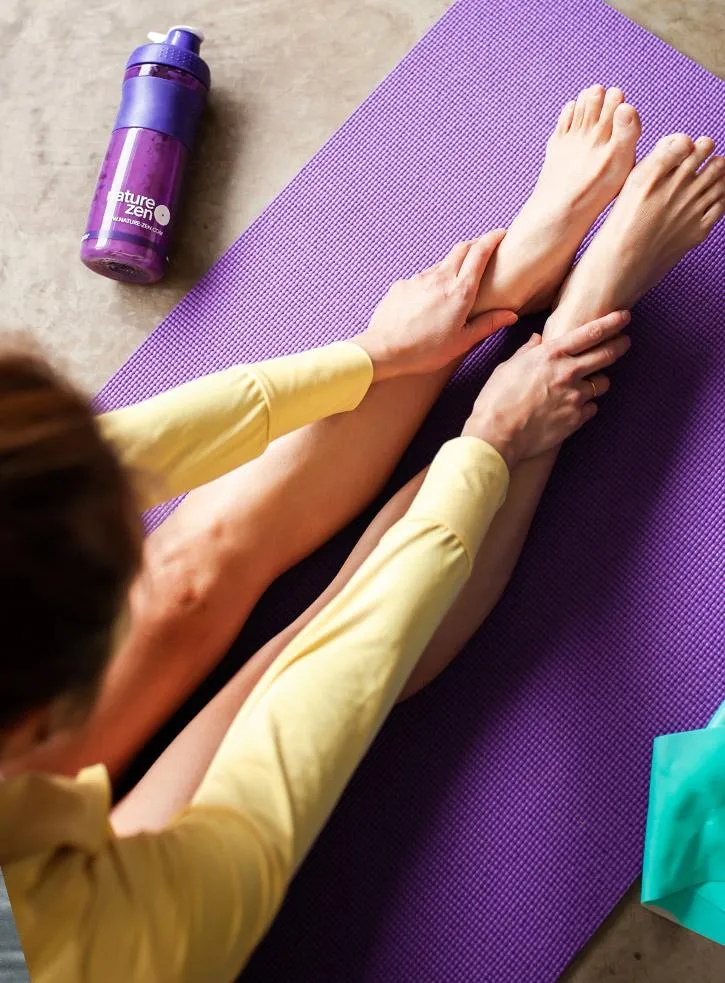
Stretching is Overrated. Here's Why.
“Passive stretching actually turns off the muscles and causes the smaller muscles to work overtime.” - Patrick Luo, SPT, PN1-NC, One80
Introduction:
Have you ever stretched when you felt tight? Did you feel looser for a few minutes before feeling tighter again? Have you noticed that no matter how many times you stretch, you feel stiffer later in the day?
Well, that's because passive stretching actually turns off the muscles and causes the smaller muscles to work overtime and makes the muscles weaker since it cannot stabilize the joints. And when those smaller muscles get stretched more, then the vicious cycle repeats.

With that said, here are 3 ways to reverse the tightness and increase mobility! 👊
1. Ditch the Stretching and Do Muscle Squeezes Instead
Muscle squeezes, also known as isometrics, allow the muscles activate so it can reverse the muscle tightness and increase the mobility. An analogy I like to use is imagine your car brake is loose and randomly goes off when you are driving. If someone decides to stretch the brake to make it "looser" it's similar to taking the brake out entirely. Now you can press the gas pedal no problem. But the issue is, you have no brakes to slow you down in case you see a pedestrian. Instead, it's better to take the car to the mechanic to figure out what part of the car brake is loose so it can be fixed. Doing the muscle squeezes or isometrics is just like taking it to the mechanics. They fix the brakes so the gas pedal can work appropriately while allowing the car to be able to stop as needed when a pedestrian Jay-walks (or crosses the road). Doing a simple 5 second, 5 times isometrics for the muscles allows one to feel like a well oiled and maintained race car! Ready to get after it again!
Here is a video on muscle squeezes to make those hamstrings or the back of the legs mobile!
2. Heel pain, Plantar Fasciitis, or arch pain? Try This!
When we are sleeping, did you know the front of your legs are being stretching because the foot dips forward? And this causes the calves to become tight? And when we take a step first thing in the morning, we have immense heel pain because the muscles are not able to absorb the forces that is being sent to the nerves. And when the nerves are over-stimulated, it leads to pain.
So, in simpler terms, imagine the front of your leg and the back of your leg are opposite ends of a seesaw. When the front of your leg is being stretched, that end of the seesaw gets lighter so the back of the leg overcompensates. In order to fix it, the strength needs to be added to the back to the front of the leg to allow the seesaw to be balanced again. So, when I first wake up, I do toe raises with my feet pointing forward for 5 seconds, tilt it out and raise it for 5 seconds, then tilt it in and raise it for 5 seconds. Then repeat for 5 times in each direction.
Simply, do toe raises at the normal position, foot in, and foot out for 5 sec for 5 times at each position to turn the muscles in the front of the leg back on to reverse the heel pain, plantar fasciitis, and arch pain.
Here is a video on how to do muscle squeezes for the foot!
3. Strengthening through Full Mobility, Yes Please!
For the people saying, "How to I increase my mobility if I should avoid stretching?" I hear you. The is a research study that said strengthening through full range of motion vs stretching had NO DIFFERENCES on mobility gains. This means it would be better to do the isometrics to turn on the muscles then strengthen through full mobility. I like to use the weight machines to strengthen through my full mobility to improve my mobility. If the machines are not available, I can use the barbell, dumbbells, or other weights to go through my routine.
No only has my mobility improved, by also my strengthen improves too! And this helps blood sugar control significantly!!!
Want to see the evidence? Read it here: https://pubmed.ncbi.nlm.nih.gov/33917036/
4. Bonus Tip for Beginners or People who Get Sore
When I started working out for the first time, I felt this intense soreness 24-48 hours after my workouts. I thought I pulled something until I learned that the tenderness is actually muscle soreness. While working out, the muscles need a period to become stronger and leaner. The tenderness sensation is a signal to say, "Hey, I need to recover first before lifting heavier weights again." And to improve the recovery process so it is not as sore is to increase the intake of protein and water. Afterall, that's what the muscles are made out of and giving it what it needs will help reduce how long people get sore for.

https://amzn.to/3HdusSc Here is a link for a creatine supplement I use to improve my soreness recovery, brain health, and hydration of muscles!
For transparency purposes, as an Amazon Associate I earn from qualifying purchases and it supports the growth of this blog. I only recommend products I trust or use to improve my health and wellness.
Review the disclaimers here: https://www.diabetesmanagementgroup.org/legalpage
Call or Text:
(307) 288-3440
Email:
pluo@diabetesmanagementgroup.org
Website:
www.diabetesmanagementgroup.org






